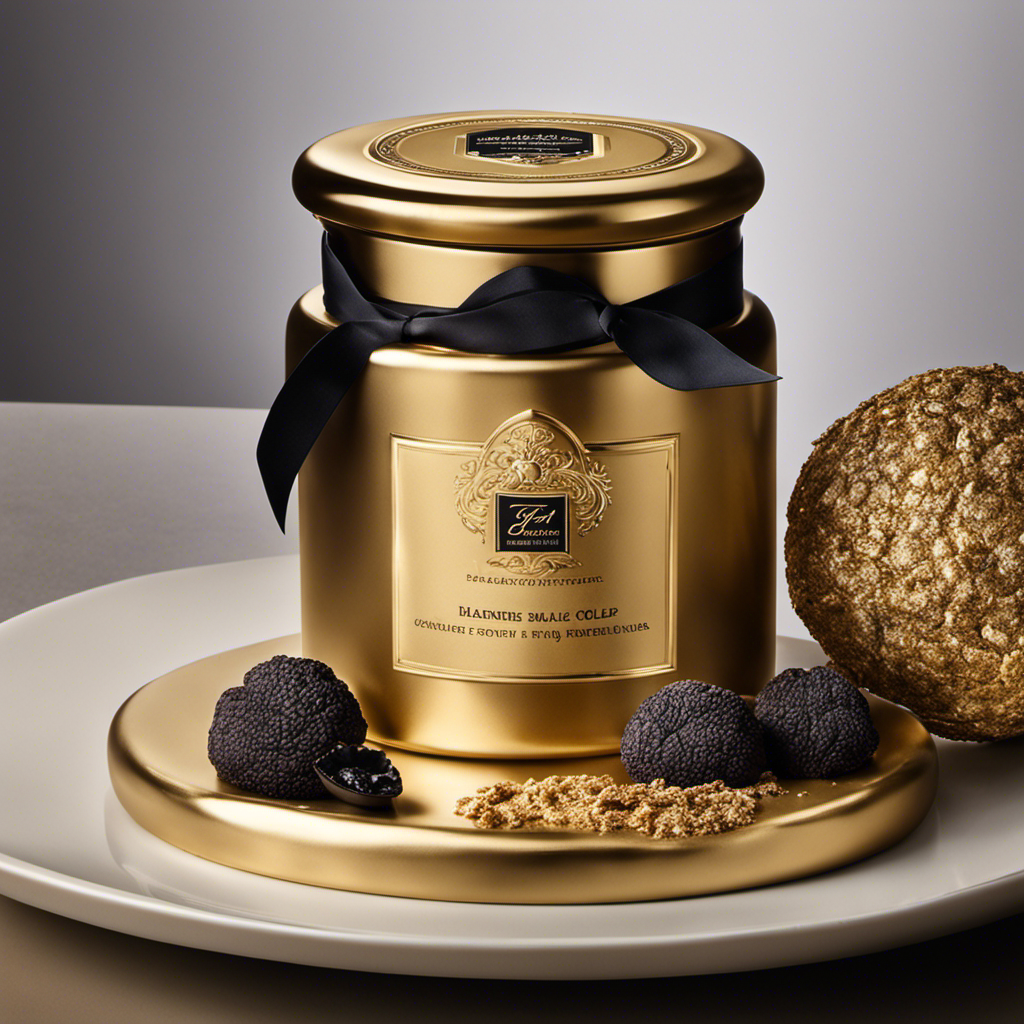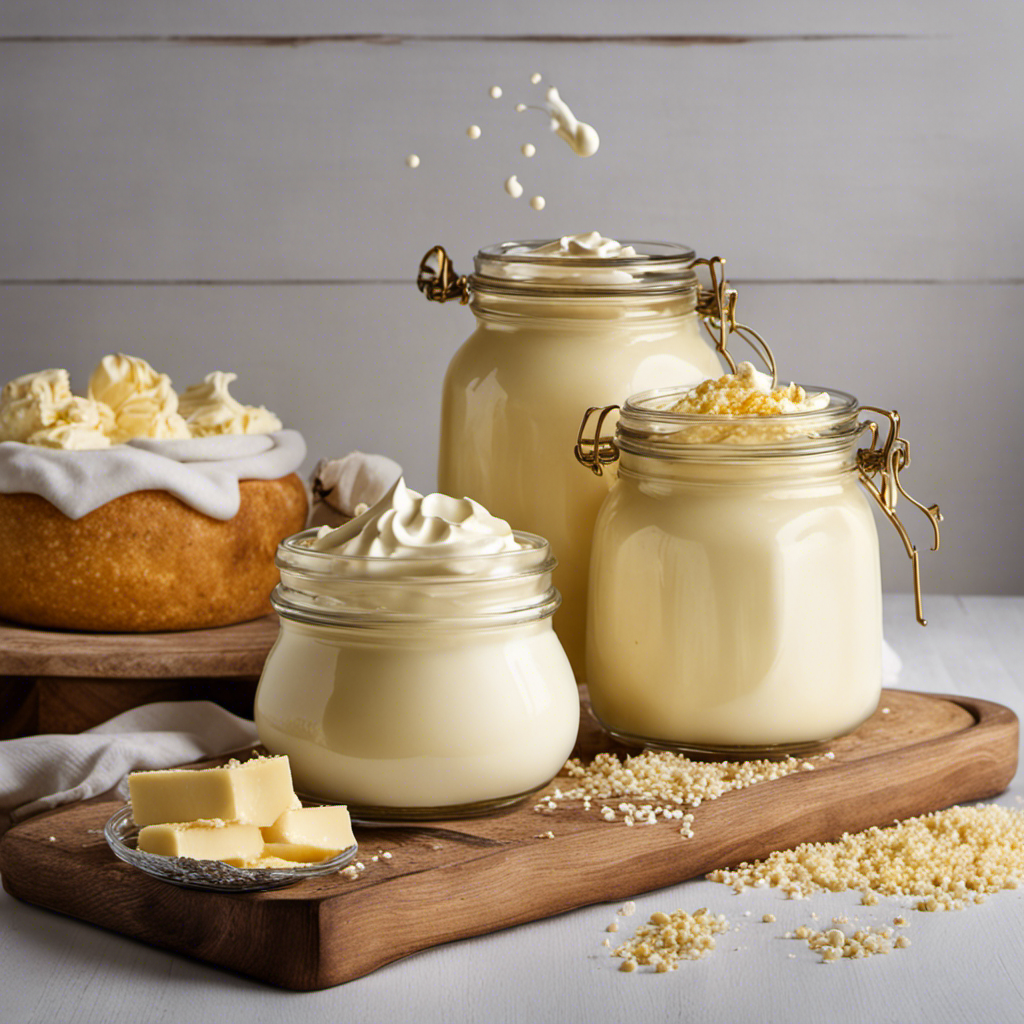Butter Basics
Cook Fresh Butter Beans in 3 Easy Steps
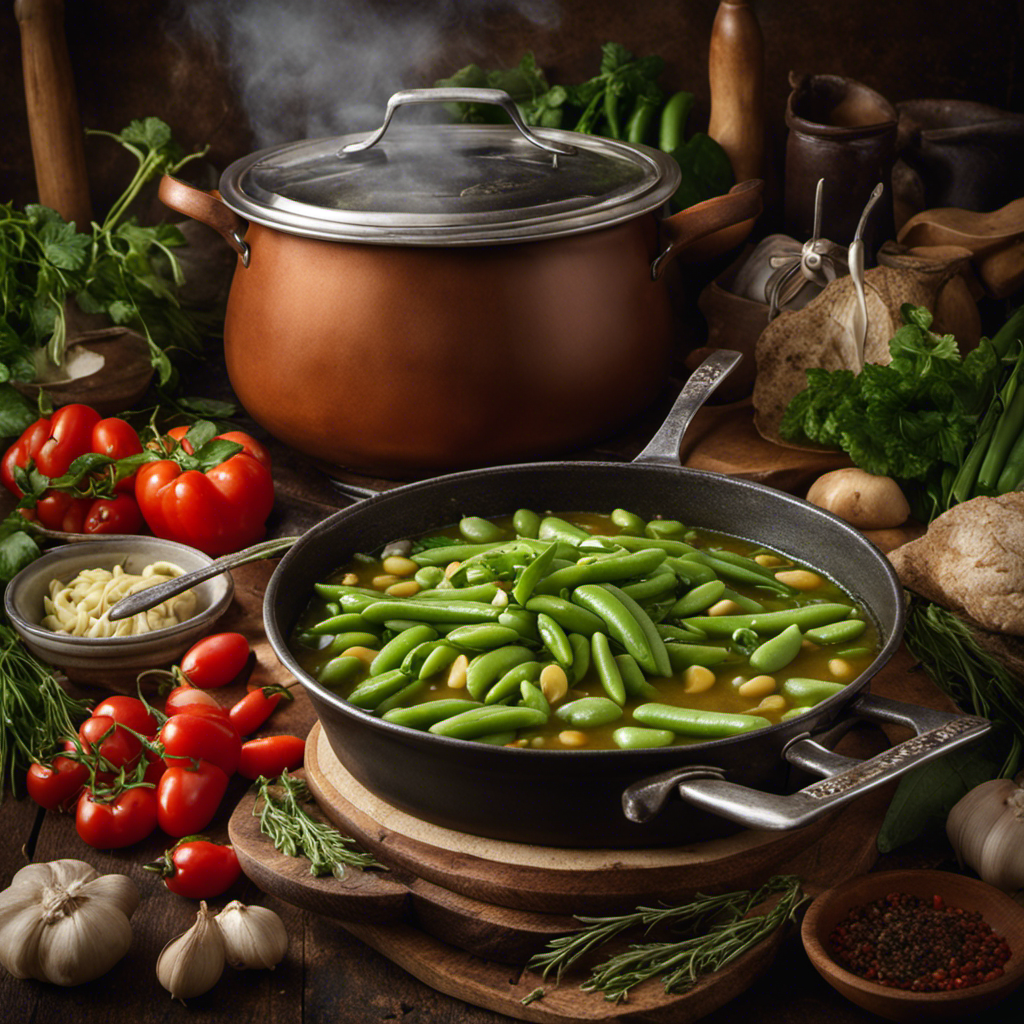
As a lover of nutritious and wholesome foods, I am constantly on the lookout for delicious and versatile ingredients. Let me tell you, fresh butter beans are a true gem in the culinary world.
These creamy legumes, with their smooth texture and delicate flavor, can elevate any dish to new heights. Whether you’re a seasoned cook or a novice in the kitchen, this article will guide you through the art of preparing and cooking fresh butter beans, unlocking a world of delectable possibilities.
So grab your apron and let’s dive into the wonderful world of butter beans!
Key Takeaways
- Look for plump and blemish-free beans
- Soak the beans in cold water for at least 4 hours or overnight
- The cooking method for butter beans depends on preference and recipe
- Soaking the beans enhances digestibility, reduces cooking time, improves flavor and texture, and enhances nutrient absorption.
Choosing and Preparing Fresh Butter Beans
When choosing fresh butter beans, it’s important to look for ones that are plump and free of blemishes. These beans come in a beautiful range of colors, from pale cream to vibrant green.
To ensure their tenderness and flavor, fresh butter beans require soaking before cooking. Soak them in cold water for at least 4 hours or overnight. This helps to soften the beans and reduce their cooking time.
Once soaked, there are various cooking methods you can use to bring out the best in these delicious legumes. You can boil them until tender, sauté them with garlic and herbs, or even bake them with a savory sauce. The choice of cooking method depends on your preference and the recipe you’re following.
Soaking Butter Beans for Optimal Cooking
Soaking butter beans before cooking is a crucial step in achieving the perfect texture and flavor. The soaking time can vary depending on the size and freshness of the beans, but generally, overnight soaking is recommended.
This process helps to soften the beans, reduce cooking time, and improve their digestibility, allowing you to fully enjoy their creamy goodness.
Soaking Time for Beans
The recommended soaking time for fresh butter beans is usually around 8-12 hours. Soaking beans overnight has numerous benefits. Firstly, it helps to soften the beans, making them easier to cook and reducing the cooking time. Secondly, it helps to remove some of the natural sugars in the beans, which can cause digestive discomfort for some people. By soaking the beans, these sugars are released into the soaking water, resulting in a more easily digestible final dish. However, if you don’t have time for overnight soaking, there are alternative methods you can try. One option is to use the quick soak method, where you bring the beans to a boil, remove from heat, and let them sit for an hour. Another option is to use a pressure cooker, which can cook the beans without soaking in a fraction of the time. Overall, soaking fresh butter beans is key to achieving the best texture and flavor in your dishes.
| Benefits of Overnight Soaking | Alternative Methods of Cooking Beans |
|---|---|
| Softens the beans | Quick soak method |
| Reduces cooking time | Pressure cooker |
| Removes natural sugars |
Benefits of Soaking
Using the quick soak method or a pressure cooker can save time when preparing beans. As someone who loves cooking, I have discovered the benefits of overnight soaking and alternative soaking methods. Here are some reasons why you should consider these methods:
-
Enhanced Digestibility: Soaking beans overnight or using alternative methods helps break down complex sugars and starches, making them easier to digest.
-
Reduced Cooking Time: By soaking beans, you can significantly reduce their cooking time, saving you precious minutes in the kitchen.
-
Improved Flavor and Texture: Soaking beans overnight allows them to absorb water, resulting in a creamier texture and more robust flavor.
-
Enhanced Nutrient Absorption: Soaking beans enhances their nutrient availability, allowing your body to absorb more vitamins and minerals.
Incorporating these soaking methods can elevate your butter bean dishes to a whole new level, providing you with delicious and nutritious meals in no time.
Boiling Butter Beans: Step-By-Step Instructions
To cook fresh butter beans, start by rinsing them under cold water to remove any dirt or impurities. Then, bring a pot of water to a boil and add the beans. The boiling time will depend on the size and freshness of the beans, but it usually takes around 25-30 minutes. While they’re boiling, you can add flavorings like salt, pepper, garlic, or herbs to enhance their taste. The beans will become tender and creamy when they’re ready.
Once cooked, drain them and they’re ready to be enjoyed in various dishes.
Now that you know how to boil butter beans, let’s move on to the next step: slow-cooking them for added flavor.
Slow-Cooking Butter Beans for Added Flavor
When it comes to slow-cooking butter beans, I’ve learned that seasoning is the key to achieving maximum flavor. By adding a combination of herbs and spices like thyme, garlic, and smoked paprika, you can elevate the taste of your dish to a whole new level.
Additionally, it’s important to consider cooking time recommendations as overcooking can result in mushy beans, while undercooking may leave them too firm. By finding the perfect balance, you’ll be rewarded with butter beans that are tender, flavorful, and absolutely delicious.
Seasoning for Maximum Flavor
For maximum flavor, it’s important to season fresh butter beans with a blend of herbs and spices. Seasoning your beans properly can elevate their taste and make them even more delicious. Here are some different types of seasonings and the proper technique for seasoning your butter beans:
- Garlic powder: adds a savory and slightly spicy flavor.
- Onion powder: provides a sweet and aromatic taste.
- Paprika: adds a smoky and slightly sweet flavor.
- Thyme: adds a subtle earthy and herby taste.
To season your butter beans, simply sprinkle a pinch of each seasoning onto the beans and mix well. Make sure to taste and adjust the seasonings according to your preference. The combination of these herbs and spices will enhance the natural flavors of the butter beans, creating a mouthwatering dish.
Now that your butter beans are seasoned to perfection, let’s move on to the next step: cooking time recommendations.
Cooking Time Recommendations
Now that they’re seasoned, you’ll want to simmer the butter beans for about 45 minutes to ensure they’re cooked to perfection.
But before we get into the cooking time, let’s talk about soaking techniques. Soaking butter beans overnight in water with a pinch of salt can help soften them and reduce cooking time. However, if you’re short on time, you can also use a quick-soak method. Simply bring the beans to a boil in a pot of water, remove from heat, and let them sit for an hour.
Now, let’s move on to alternative cooking methods. While simmering is the most common method, you can also pressure cook butter beans for faster results or even try slow cooking them for a richer flavor.
Whichever method you choose, remember to taste a bean for desired tenderness before serving.
Pressure Cooking Butter Beans: a Quick and Easy Method
To save time and effort, you can use a pressure cooker to quickly and easily cook fresh butter beans. Pressure cooking is a great alternative to slow cooking because it reduces cooking time significantly and helps retain the nutrients in the beans. Here are some pros and cons of pressure cooking:
Pros:
- Faster cooking time
- Preserves nutrients
- Tenderizes beans quickly
- Energy efficient
Cons:
- Risk of overcooking if not monitored closely
- Limited capacity for larger batches
- Requires some learning and practice
- Less control over cooking process
When pressure cooking butter beans, make sure to soak them beforehand and add enough liquid to the cooker. Set the pressure and cooking time according to your preference. Once cooked, release the pressure carefully and enjoy your delicious butter beans in no time!
Sautéing Butter Beans With Herbs and Spices
Sauteed butter beans with herbs and spices create a flavorful and aromatic side dish. This cooking method brings out the natural sweetness of the beans while adding layers of delicious flavors.
To sauté butter beans, start by heating some olive oil in a pan over medium-high heat. Add the beans and cook them until they are golden brown and slightly crispy, about 5-7 minutes.
Next, add your choice of herbs and spices such as garlic, thyme, and paprika to elevate the taste. The sautéing technique allows the beans to absorb the flavors, resulting in a mouthwatering dish. You can experiment with different flavor combinations like lemon zest and parsley or cumin and coriander for a unique twist.
Sautéed butter beans make a perfect side dish for any meal, adding a burst of flavor and a healthy dose of protein.
Now, let’s discover another cooking method that will give these beans a crispy texture: roasting.
Roasting Butter Beans for a Crispy Texture
When it comes to roasting butter beans, there are several benefits that make it worth trying.
Firstly, the roasting process gives the beans a deliciously crispy texture that is hard to resist.
Secondly, roasting allows for endless seasoning options, from simple salt and pepper to a variety of herbs and spices that can elevate the flavor to a whole new level.
Lastly, it’s important to keep in mind the cooking time and temperature to ensure the beans are cooked through and golden brown on the outside.
Benefits of Roasting
You can enhance the flavor and texture of fresh butter beans by roasting them in the oven. Roasting brings out the natural sweetness of the beans and gives them a satisfying crunch.
Here are some benefits of roasting and different methods you can try:
-
High heat: Roasting at a high temperature helps to caramelize the sugars in the beans, resulting in a rich, nutty flavor.
-
Dry roasting: This method involves tossing the beans with olive oil, salt, and any desired spices, then roasting them in a preheated oven until they are crispy and golden brown.
-
Pan roasting: Heat a skillet over medium-high heat, add the beans and a little oil, and cook until they are tender and slightly charred.
-
Air frying: For a healthier option, try roasting the beans in an air fryer. This method requires less oil and still produces crispy results.
Roasting butter beans is a simple and delicious way to elevate their taste and texture. Give it a try and enjoy the delightful flavors that come from roasting!
Seasoning Options for Roasting
Roasting is a versatile cooking method that allows for a variety of seasoning options to enhance the flavor of your dish. When it comes to roasting, there are endless possibilities for flavor combinations. Whether you prefer sweet or savory, there’s a seasoning option to suit every taste.
For a classic roasted chicken, try a combination of garlic, thyme, and lemon zest. If you’re looking for something with a little kick, a mix of paprika, cayenne pepper, and cumin will add a bold and spicy flavor to your meat or vegetables. For a more exotic twist, try a blend of coriander, turmeric, and ginger.
The key to successful roasting is experimenting with different roasting techniques and finding the perfect flavor combination that suits your palate. Now that we’ve explored the seasoning options, let’s move on to the next crucial aspect of roasting: cooking time and temperature.
Cooking Time and Temperature
To ensure your meat is cooked to perfection, it’s important to monitor the internal temperature and adjust the cooking time accordingly. Here are some key points to keep in mind when it comes to cooking time and temperature:
- Use a meat thermometer to accurately gauge the internal temperature of your meat.
- Different cooking techniques require different temperatures. For example, grilling requires high heat, while slow cooking requires low heat.
- Adjust the cooking time based on the thickness and size of your meat. Thicker cuts will require longer cooking times.
- Experiment with alternative cooking methods like sous vide or smoking to achieve different flavors and textures.
By understanding the importance of cooking time and temperature, you can elevate your cooking techniques and explore alternative methods for preparing delicious meals.
Now, let’s transition into the next section about steaming butter beans: a healthy cooking option.
Steaming Butter Beans: a Healthy Cooking Option
For a healthier cooking option, try steaming your fresh butter beans until they are tender and delicious. Steaming is a fantastic way to preserve the natural flavors and textures of the beans while also retaining their nutritional value.
Not only does steaming help to maintain the vibrant green color of the beans, but it also ensures that they are cooked evenly and retain their firmness. This cooking method is ideal for those looking to reduce their intake of added fats and oils, as no additional oil is needed.
Steamed butter beans are packed with health benefits, including being a great source of dietary fiber, protein, and essential minerals. By steaming them, you can enjoy all the goodness of butter beans without compromising on taste or nutrition.
Making Butter Bean Soup: a Comforting Dish
After steaming butter beans, I decided to try another delicious dish using these versatile legumes. So, I decided to make a comforting butter bean soup. Let me tell you, the result was absolutely amazing! The creamy texture of the beans combined with the flavorful broth created a hearty and satisfying soup that warmed my soul.
If you’re looking for new ways to enjoy butter beans, here are a few ideas:
- Butter bean casserole: A cheesy and flavorful dish that pairs perfectly with a side of crusty bread.
- Butter bean hummus: A twist on traditional hummus using butter beans for a creamy and smooth dip.
- Butter bean and vegetable stir-fry: A quick and healthy option that combines the earthy flavor of butter beans with fresh vegetables.
- Butter bean and potato salad: A refreshing and filling salad that makes a great side dish for any meal.
Now, let’s move on to incorporating butter beans into salads and side dishes.
Incorporating Butter Beans Into Salads and Side Dishes
Incorporating butter beans into salads and side dishes adds a delicious and nutritious twist to your meals.
One of my favorite ways to enjoy butter beans is in a butter bean and quinoa salad. The creamy texture of the beans pairs perfectly with the nutty flavor of quinoa. I love to add some fresh vegetables like cherry tomatoes, cucumbers, and bell peppers for a burst of color and crunch. The combination of flavors is simply divine.
Another fantastic option is a butter bean and vegetable stir fry. Saute some onions, garlic, and your favorite veggies in a hot pan, then add in the butter beans for an extra protein boost. The beans soak up all the flavors, creating a mouthwatering dish that is both satisfying and healthy.
Storing and Freezing Fresh Butter Beans for Future Use
To properly store and freeze fresh butter beans for future use, you’ll need to blanch them first. Blanching helps preserve the color, texture, and nutritional value of the beans.
Here’s a step-by-step guide on how to freeze butter beans:
- Start by washing the beans thoroughly and removing any dirt or debris.
- Bring a pot of water to a boil and add the beans. Cook them for 2-3 minutes until they are slightly tender.
- Once cooked, transfer the beans to an ice bath to stop the cooking process and cool them down quickly.
- Drain the beans and pat them dry with a paper towel.
- Place them in a freezer-safe bag or container and label it with the date.
Frequently Asked Questions
Can I Use Canned Butter Beans Instead of Fresh Ones in These Recipes?
I prefer using fresh butter beans instead of canned ones in these recipes. Fresh butter beans have a better texture and flavor, and they retain more nutrients. Plus, cooking with fresh ingredients always adds a special touch to any dish.
How Long Does It Take to Slow-Cook Butter Beans for Added Flavor?
Slow cooking butter beans for added flavor takes approximately 2-3 hours. The extended cooking time allows the beans to absorb the flavors of the seasonings and become tender and creamy.
Can I Use Dried Butter Beans Instead of Fresh Ones?
Yes, you can use dried butter beans instead of fresh ones in recipes. However, there are some nutritional differences between the two. Dried beans may require soaking and longer cooking times to achieve desired tenderness and flavor.
What Are Some Recommended Herbs and Spices to Sauté Butter Beans With?
When it comes to enhancing the flavor of butter beans, I love using a combination of fresh herbs and spices. Some recommended options include garlic, thyme, and paprika for a flavorful sauté.
How Long Can I Store Fresh Butter Beans in the Refrigerator Before They Go Bad?
I usually store fresh butter beans in the refrigerator for about 3-5 days before they start to go bad. Signs of spoiled butter beans include a slimy texture, unpleasant odor, and discoloration.
Conclusion
In conclusion, I must say that cooking fresh butter beans is truly a delightful experience.
From selecting the perfect beans to preparing them with love, it’s a journey that results in delicious and nutritious meals.
Did you know that butter beans are not only tasty but also packed with fiber? In fact, just one cup of cooked butter beans provides a whopping 17 grams of fiber!
So next time you cook up a batch of these creamy delights, remember that you’re not just treating your taste buds, but also taking care of your digestive health.
Happy cooking!
Sunny’s articles radiate enthusiasm, much like her sunny disposition. As our resident “Butter Geek”, she delves deep into the latest butter trends, ensuring our readers are always in the know. Beyond her writing, Sunny’s passion lies in exploring vegan butter alternatives and hosting butter-tasting soirées.
Butter Basics
What if You Buttered Up Your Life with “Butter”?

Have you thought about the idea of making your own delicious and nutritious butter at home? Imagine being able to create that rich, creamy delicacy right in your own kitchen!
In this article, we will delve into the world of butter, exploring its various types and culinary uses. We will also uncover the science behind making perfect butter at home and dive into the fascinating history of this beloved ingredient.
Get ready to embark on a buttery adventure that will leave you craving for more.
Key Takeaways
- Grass-fed butter is rich in essential vitamins and fatty acids, promoting healthy skin, bones, and immune system.
- Homemade butter allows for control over ingredients, avoiding unhealthy additives or preservatives.
- Flavored butter options and vegan alternatives offer diverse culinary exploration and cater to different dietary preferences.
- Proper temperature during the butter-making process is crucial for achieving the desired consistency and yield.
The Health Benefits of Homemade Butter
If you make your own butter, you’ll enjoy the health benefits that come with it. One of the main benefits of grass-fed butter is its high nutrient content. Grass-fed cows produce milk that is rich in vitamins A, D, E, and K. These vitamins are essential for maintaining healthy skin, strong bones, and a properly functioning immune system.
Grass-fed butter also contains a healthy balance of omega-3 and omega-6 fatty acids, which are important for brain health and reducing inflammation in the body.
Additionally, making your own butter at home allows you to control the ingredients, giving you the freedom to create flavored butter using herbs, spices, or even fruits. This allows you to add extra flavor and nutrients to your dishes without relying on store-bought options that may contain unhealthy additives or preservatives.
Exploring Different Types of Butter
There are various types of butter available for exploration. When it comes to flavored butter, the options are endless. From savory garlic butter to sweet cinnamon butter, these variations add a burst of flavor to any dish.
Additionally, for those following a vegan lifestyle, there are plenty of vegan butter alternatives to choose from. Made from plant-based oils like coconut or olive, these spreads provide a similar creamy texture and taste. They are perfect for baking or spreading on toast.
Exploring different types of butter can be a fun and delicious journey, allowing you to elevate your meals and cater to different dietary preferences. So go ahead and indulge in the world of flavored butter and vegan alternatives to discover new and exciting flavors.
Butter as a Culinary Ingredient: Tips and Tricks
To enhance your culinary skills, try incorporating butter into your recipes using these helpful tips and tricks.
Butter is not only a rich and creamy ingredient, but it can also be used as a vegan alternative. For those who follow a plant-based diet, there are several substitutes available such as vegan butter or margarine made from plant oils. These alternatives can be used in baking, cooking, or spreading on toast.
Additionally, using flavored butter can elevate your dishes to a whole new level. Get creative with flavor combinations like garlic and herb butter for roasted vegetables or lemon and dill butter for grilled fish. The possibilities are endless, and flavored butter can add depth and complexity to your favorite recipes.
The Science Behind Making Perfect Butter at Home
Creating homemade butter is a fascinating process that involves churning cream until it separates into butter and buttermilk. The chemistry of churning butter is a delicate balance of fat and water molecules. Temperature plays a crucial role in butter making.
Here are some key points to consider:
- Cream should be at a slightly warmer temperature, around 50-55°F, to ensure proper separation.
- Churning at too low a temperature can result in a longer process and less yield.
- Conversely, churning at too high a temperature can cause the butter to become greasy and not hold its shape well.
- The ideal temperature range allows for the fat globules to coalesce and form a solid mass.
- The process can be accelerated by using colder cream or a colder churning environment.
Understanding the chemistry and temperature requirements of butter making ensures a successful outcome.
Now, let’s uncover the history of butter: from ancient times to today.
Uncovering the History of Butter: From Ancient Times to Today
Let’s delve into the fascinating history of butter, from ancient times to today.
Butter has played a significant role in the cultural traditions of various regions around the world. In Europe, for example, butter has been a staple in cooking and baking for centuries, symbolizing richness and indulgence.
In India, ghee, a form of clarified butter, holds great cultural and religious significance and is used in traditional ceremonies and rituals.
The environmental impact of butter production, however, is a growing concern. The dairy industry contributes to greenhouse gas emissions and deforestation, as well as water pollution from runoff.
Sustainable practices, such as organic farming and reducing food waste, are being implemented to mitigate these effects.
It is crucial to balance the cultural importance of butter with sustainable production methods for a better future.
Frequently Asked Questions
How Many Calories Are in a Serving of Homemade Butter?
A serving of homemade butter typically contains around 100-120 calories. It is important to note that butter is high in saturated fat and should be consumed in moderation. However, it does provide some nutritional benefits, such as being a good source of vitamin A.
What Is the Shelf Life of Homemade Butter?
The shelf life of homemade butter varies depending on storage methods. It can last up to two weeks in the refrigerator and up to six months in the freezer. Proper storage is crucial to maintain its freshness.
Can Homemade Butter Be Used as a Substitute for Margarine in Baking Recipes?
If I were to use homemade butter as a substitute for margarine in baking, I would ensure it’s properly chilled and the moisture content is controlled. This way, the butter can provide a richer flavor and better texture to the baked goods.
Are There Any Potential Allergens in Homemade Butter?
There are potential health risks associated with homemade butter, including the possibility of allergens. It’s important to consider the source of ingredients and proper hygiene practices. Store-bought butter may offer more safety assurances.
Can Homemade Butter Be Frozen for Long-Term Storage?
Yes, you can freeze homemade butter for long-term storage. It’s important to wrap it tightly to prevent freezer burn. There are many homemade butter recipes available online that can guide you through the process.
Conclusion
As I churned the cream, a sense of satisfaction washed over me. The process of making homemade butter had not only given me a delicious spread for my toast, but also a deeper understanding of its health benefits and culinary versatility.
Each rich, golden pat symbolized the nourishment and creativity that butter brings to our lives. Delving into its history, I saw how this humble ingredient has stood the test of time, evolving with us.
So, next time you see a stick of butter, remember the power it holds and the possibilities it offers.
From sneaky childhood butter licks to penning some of our most popular articles, Jamie’s journey with butter has been lifelong. His culinary background gives him a unique perspective, allowing him to craft mouthwatering articles that educate and tantalize equally. Jamie’s travel adventures revolve around finding the world’s best buttery treats when he isn’t writing.
Butter Basics
What Happens if You Use Expired Shea Butter on Your Skin?
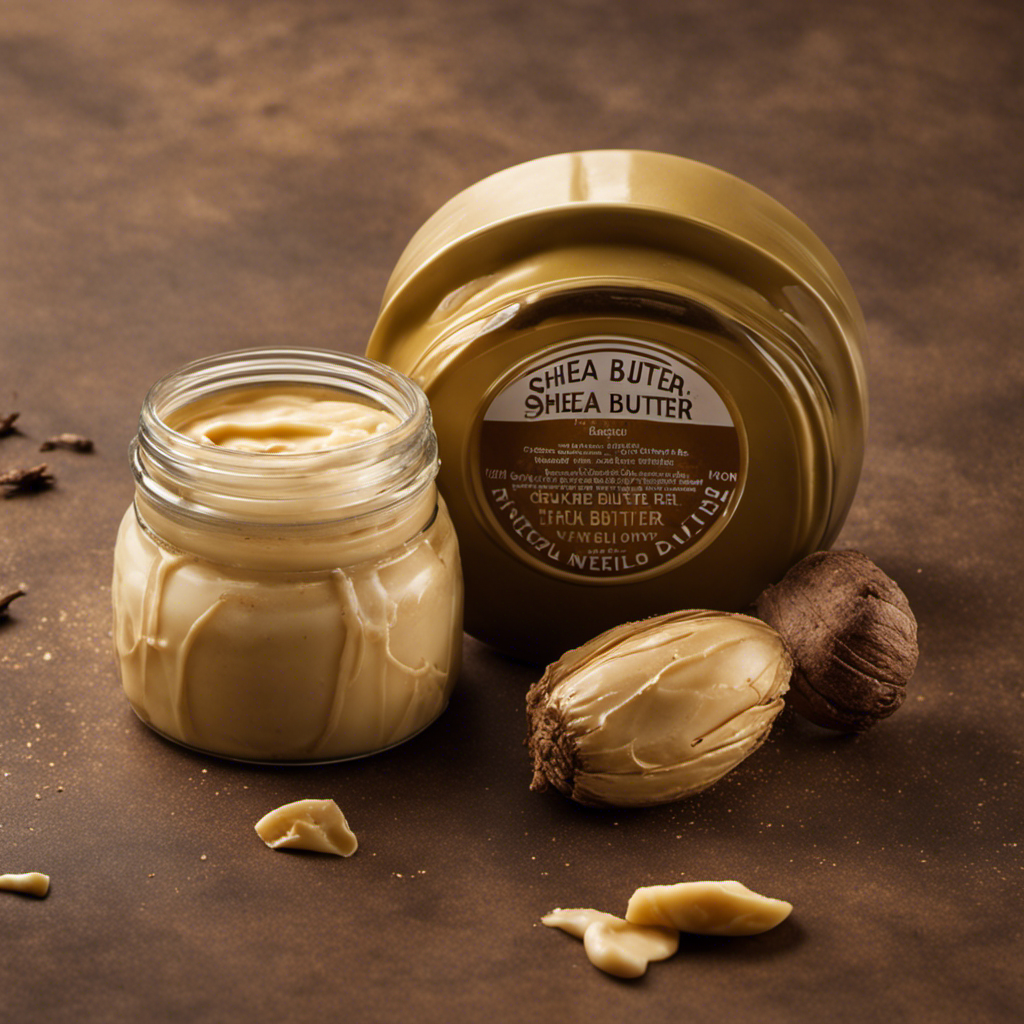
As someone who is passionate about taking care of my skin, I have learned the importance of using high-quality products. But what happens if we accidentally use expired shea butter? Let me tell you, the results are not good.
Signs of expired shea butter include changes in texture, loss of nutritional benefits, and potential skin irritation. Plus, there’s a risk of mold or bacteria growth.
In this article, I’ll delve into the potential dangers and safety concerns of using expired shea butter, so you can make informed decisions for your skincare routine.
Key Takeaways
- Using expired shea butter can lead to reduced skin softness and decreased skin elasticity.
- Expired shea butter may cause dry and rough skin, as well as a lack of natural glow.
- There is a potential risk of mold or bacteria growth on expired shea butter, which can result in skin irritations, infections, and allergic reactions.
- To ensure safety and effectiveness, it is important to check the expiration date, store shea butter properly, and avoid using expired products to prevent bacterial or fungal contamination.
Signs of Expired Shea Butter
If you’re wondering how to tell if your shea butter has expired, you can look for changes in texture and smell. Shea butter typically has a shelf life of about two years, but it can start to deteriorate over time.
When shea butter expires, it may become grainy or lumpy instead of smooth and creamy. The texture can be a clear indicator that the shea butter is past its prime. Additionally, the smell of expired shea butter can change, becoming rancid or unpleasant.
It’s important to note that using expired shea butter may not be harmful to your skin, but it may not provide the same beneficial effects as fresh shea butter.
Now, let’s dive into the changes in texture and consistency that can occur when shea butter expires.
Changes in Texture and Consistency
To change the texture and consistency of your expired shea butter, simply store it in a warm environment. When shea butter expires, it can become dry, hard, or grainy. However, by subjecting it to heat, you can bring it back to its original smoothness.
Here are some changes you may notice in the appearance of expired shea butter:
- Loss of its creamy consistency
- Formation of lumps or clumps
- Development of a rancid smell
It’s important to note that expired shea butter may not be as effective as fresh shea butter in providing the same nourishing benefits for your skin. Additionally, the shelf life of shea butter can vary depending on how it is stored. Properly stored shea butter can last up to two years, but exposure to air, heat, and light can shorten its lifespan.
Loss of Nutritional Benefits
When shea butter expires, it loses its nutritional benefits and may not provide the same nourishing effects for your skin. As the expiration date approaches, the effectiveness of shea butter decreases, leading to weakened nourishing properties. The natural vitamins and fatty acids that make shea butter so beneficial gradually break down over time, resulting in a diminished ability to moisturize and protect the skin.
The expiration process causes the shea butter to become less potent, reducing its ability to soothe dryness, heal damaged skin, and improve elasticity. Using expired shea butter may not only be less effective but could also potentially cause skin irritations or allergic reactions.
To ensure maximum benefits, it’s essential to check the expiration date and replace your shea butter when needed.
Potential Skin Irritation
Allergic reactions are possible when using expired shea butter, as the quality and potency of the ingredients may have degraded over time. It is important to note that everyone’s skin reacts differently, so what may cause an allergic reaction in one person may not affect another.
Additionally, expired shea butter can also lead to increased bacterial growth, which can further irritate the skin and potentially cause infections.
Allergic Reactions Possible
Using expired shea butter can potentially cause allergic reactions. It is important to be aware of the potential side effects that can occur when using expired skincare products.
Here are some key points to consider:
-
Skin irritation: Expired shea butter may contain harmful bacteria or mold, which can irritate the skin and cause redness, itching, or rashes.
-
Decreased effectiveness: Over time, shea butter can lose its beneficial properties, such as its moisturizing and healing abilities. Using expired shea butter may not provide the desired results.
-
Risk of infection: Expired shea butter can harbor increased bacterial growth, which can lead to skin infections or other complications.
Therefore, it is crucial to always check the expiration dates on skincare products and avoid using expired shea butter to prevent potential allergic reactions and other negative effects on the skin.
Increased Bacterial Growth
The risk of infection can significantly increase due to the increased bacterial growth in expired shea butter. When shea butter expires, it becomes more susceptible to increased microbial contamination. Bacteria can thrive in expired shea butter, leading to a higher chance of contamination when it is applied to the skin. This increased bacterial growth can pose a serious risk to our health.
Additionally, expired shea butter may also have diminished efficacy. Over time, the beneficial properties of shea butter, such as its moisturizing and healing abilities, can deteriorate, making it less effective in providing the desired results.
It is important to check the expiration date of shea butter before using it to ensure its safety and efficacy.
Decreased Effectiveness for Moisturizing
When shea butter expires, its hydration properties become weakened, resulting in a decreased effectiveness for moisturizing the skin.
Additionally, the nourishing benefits of expired shea butter diminish, causing a loss in its ability to provide essential nutrients to the skin.
As a result, the skin may experience reduced softness and a lack of moisture retention, leading to potential dryness and discomfort.
Weakened Hydration Properties
Expired shea butter may not have its full hydration properties intact. When shea butter expires, it can lead to weakened hydration properties, resulting in decreased moisturizing effectiveness. This means that using expired shea butter on your skin may not provide the same level of hydration and moisture as fresh shea butter.
Here are some emotional responses that may arise from using expired shea butter:
- Frustration: Feeling disappointed that the shea butter you were counting on for hydration is not as effective as expected.
- Discomfort: Experiencing dryness and roughness on your skin due to the weakened hydration properties.
- Wasted effort: Realizing that you have been using expired shea butter and the time and money spent on it have gone to waste.
Using expired shea butter not only results in weakened hydration properties but also leads to a loss of nourishing benefits for your skin.
Loss of Nourishing Benefits
Using expired shea butter can result in a loss of the nourishing benefits it provides to your skin. Shea butter is known for its moisturizing and healing properties, but these qualities diminish over time. The expiration date on the packaging indicates the period during which the shea butter is at its best.
Once it has expired, the butter may start to oxidize and degrade, leading to a decrease in its effectiveness. The nourishing vitamins and fatty acids present in shea butter may become less potent, making it less beneficial for your skin. It’s important to check the expiration date and use fresh shea butter to ensure you are receiving all the nourishing benefits it has to offer.
Reduced Skin Softness
When shea butter expires, not only does it lose its nourishing benefits, but it can also lead to reduced skin softness. Expired shea butter may not provide the same level of hydration and moisture to the skin as fresh shea butter does. This can result in several negative effects on the skin, including reduced skin elasticity and decreased moisturization.
Using expired shea butter can leave your skin feeling dry, rough, and lacking the natural glow it once had. The decreased moisturization can also lead to the development of fine lines and wrinkles, making you appear older than you actually are. To ensure optimal skin softness and health, it is important to use fresh shea butter that hasn’t expired.
Potential Mold or Bacteria Growth
If shea butter is expired, there’s a chance that mold or bacteria could grow on it. Using expired shea butter can pose potential health risks as these microorganisms can cause skin irritations, infections, or allergic reactions. It is crucial to properly store shea butter to maintain its freshness and extend its shelf life. Here are some recommended storage methods to prevent the growth of mold or bacteria:
| Storage Method | Description |
|---|---|
| Keep it sealed | Ensure the shea butter container is tightly sealed after each use to prevent air and moisture from entering, creating an environment conducive to bacterial growth. |
| Store in a cool place | Shea butter should be stored in a cool, dry place away from direct sunlight and heat sources. Elevated temperatures can accelerate the growth of bacteria and mold. |
| Avoid contamination | Do not touch the shea butter directly with your fingers. Instead, use a clean, dry spoon or spatula to scoop out the desired amount to minimize the risk of introducing bacteria. |
Safety Concerns and Allergic Reactions
To avoid potential health risks and allergic reactions, it’s important to check the expiration date of your shea butter and store it properly. Expired shea butter can lead to various skin reactions, such as rashes, itching, and redness. The shelf life of shea butter can vary depending on the processing and storage conditions.
Here are a few key points to keep in mind:
- Expired shea butter may lose its effectiveness and may not provide the desired benefits for your skin.
- Using expired shea butter can increase the risk of bacterial or fungal contamination, which can lead to infections.
- Allergic reactions can occur when using expired shea butter, especially if you have sensitive skin or existing allergies.
To ensure your safety and get the most out of your shea butter, always check the expiration date and store it in a cool, dry place away from direct sunlight.
Frequently Asked Questions
Can Expired Shea Butter Be Harmful if Used on the Skin?
Expired shea butter can be harmful if used on the skin. It may lose its effectiveness for hair care and can cause potential side effects on sensitive skin. It’s important to check the expiration date and avoid using expired products.
How Long Does Shea Butter Usually Last Before It Expires?
Shea butter typically lasts up to two years before it expires. To ensure its longevity, store it in a cool, dry place away from direct sunlight. Signs of expiration include a rancid smell and a change in texture.
Can Using Expired Shea Butter Cause Skin Allergies or Irritation?
Using expired shea butter can potentially cause skin allergies or irritation. It’s important to note that expired skincare products may lose their effectiveness and could harbor harmful bacteria, posing risks to skin health.
Can Expired Shea Butter Still Be Effective for Treating Dry Skin?
Using expired shea butter on hair may not provide the same benefits as fresh shea butter. However, it can still be effective for treating dry skin, including eczema.
Is It Safe to Use Shea Butter That Has Mold or Bacteria Growth on It?
Using shea butter with mold or bacteria growth can pose potential health risks. To prevent this, store shea butter in a clean, airtight container in a cool, dry place. Always check for expiration dates to ensure safety.
Conclusion
In conclusion, using expired shea butter can have negative effects on your skin and overall health. The signs of expired shea butter include changes in texture and consistency, as well as a loss of nutritional benefits. It may also cause potential skin irritation and decrease its effectiveness for moisturizing.
Furthermore, there is a risk of mold or bacteria growth, which can be harmful to your skin. To ensure safety and avoid allergic reactions, it’s important to check the expiration date and use fresh shea butter.
So remember, don’t let your skin suffer, and always use fresh shea butter to keep it nourished and healthy.
Diana’s meticulous nature and editorial prowess set the gold standard for our content. With over a decade in the culinary and publishing industries, her guidance ensures that every article perfectly blends information and entertainment. A culinary experimenter, Diana loves whipping up new butter-based concoctions in her kitchen.
Butter Basics
What Does Indian Butter Chicken Taste Like: A Flavorful Experience
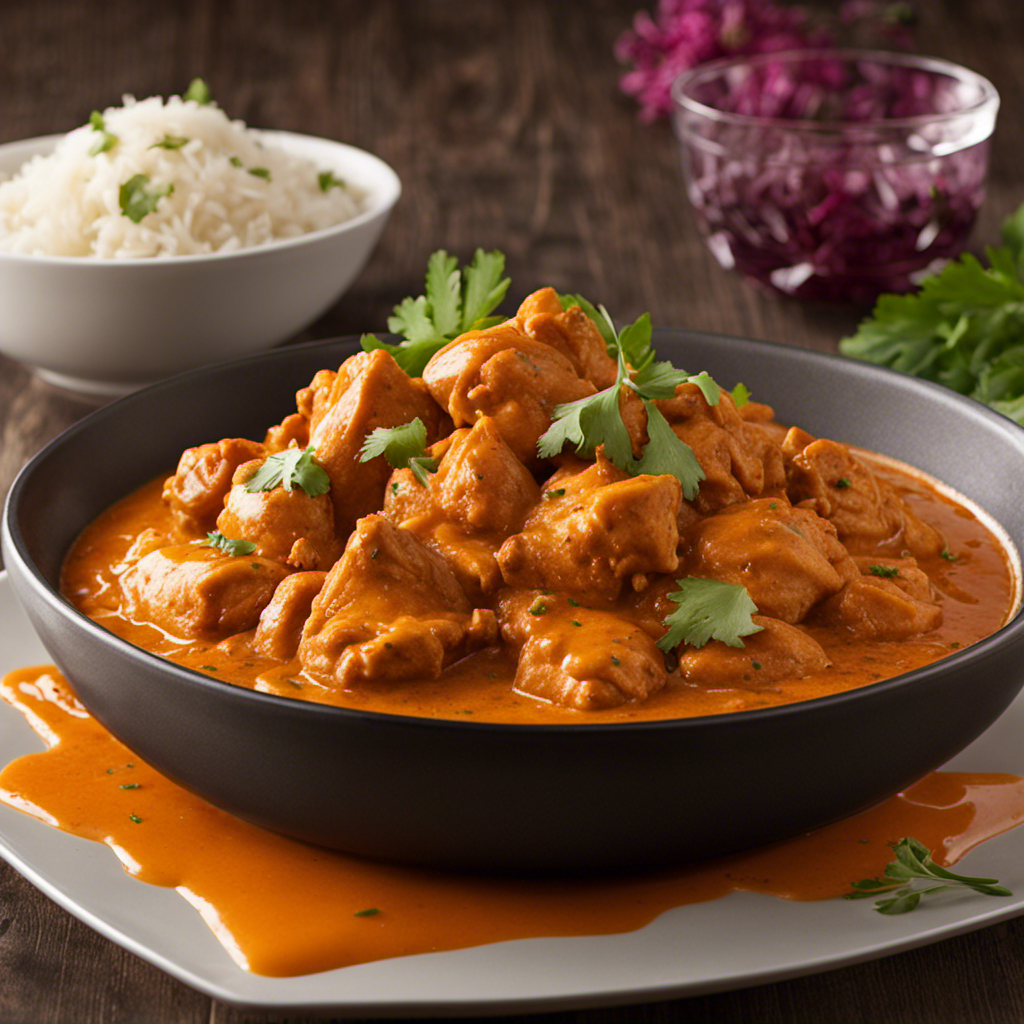
Curious about trying Indian butter chicken? Get ready for a burst of delicious flavors!
This mouthwatering dish is a symphony of traditional Indian flavors, packed with a creamy and rich sauce that will make your taste buds dance with delight.
The combination of aromatic spices creates a perfect balance of sweet and savory, while the tender and juicy chicken takes it to a whole new level.
Get ready to be transported to a world of delectable aromas and flavors that will leave you craving more.
Key Takeaways
- Indian butter chicken embodies the essence of Indian cuisine, combining spices and ingredients from diverse regional variations.
- The creamy and rich sauce in Indian butter chicken creates a symphony of flavors that complement the chicken, leaving you completely satisfied.
- The flavorful spice blend in Indian butter chicken, including spices like cumin, coriander, turmeric, and garam masala, creates a harmonious balance of heat, sweetness, and creaminess.
- The succulent and tender chicken in Indian butter chicken is infused with flavor through the marinade and cooking techniques, enhancing the overall taste of the dish.
Traditional Indian Flavors
If you’re craving traditional Indian flavors, you’ll love the rich and aromatic taste of Indian butter chicken. This dish perfectly embodies the essence of Indian cuisine with its unique blend of spices and ingredients.
Indian butter chicken has been influenced by the diverse regional variations found across India, resulting in a dish that is both familiar and distinct. From the fiery flavors of North Indian cuisine to the subtle and delicate tastes of South Indian cuisine, every bite of butter chicken is a journey through the diverse culinary landscape of India.
The combination of tender chicken, marinated in a flavorful blend of spices and cooked in a creamy and rich sauce, creates a harmonious balance of flavors that will leave you craving for more.
Creamy and Rich Sauce
Get ready to indulge in a culinary experience like no other with this discussion on the flavorful spice blend and succulent chicken pieces that make up this mouthwatering dish.
The aroma of the spices will instantly transport you to the bustling streets of India, while the tender chicken pieces will melt in your mouth, leaving you craving for more.
Each bite is a symphony of flavors, with the spices perfectly complementing the juicy chicken, creating a harmonious blend that will leave you completely satisfied.
Flavorful Spice Blend
You’ll love the flavorful spice blend in Indian butter chicken. This popular Indian dish is known for its aromatic and rich taste, thanks to the spice-infused marinade.
The combination of spices like cumin, coriander, turmeric, and garam masala creates a symphony of flavors that will tantalize your taste buds. The marinade not only adds depth to the chicken but also helps to tenderize it, resulting in succulent and juicy pieces of meat.
As the chicken cooks in the creamy and buttery tomato sauce, the flavors meld together, creating a harmonious balance of heat, sweetness, and creaminess. The spices add a subtle kick that is not overpowering but still provides a delightful warmth.
Get ready to savor the explosion of flavors in every bite as the succulent chicken pieces are coated in the fragrant and spiced sauce.
Succulent Chicken Pieces
The succulent chicken pieces become incredibly tender as they cook in the creamy tomato sauce. The juicy marinade penetrates the meat, infusing it with a burst of flavor. The chicken takes on a rich, savory taste that is enhanced by the spices and herbs in the marinade.
The cooking techniques used in Indian butter chicken are essential in achieving the perfect texture and taste. The chicken is first marinated in a mixture of yogurt, lemon juice, and various spices for several hours. This allows the flavors to develop and tenderize the meat.
Then, the chicken is cooked in a buttery tomato sauce, allowing it to absorb the creamy goodness. The result is a dish that is succulent and full of flavor, with the chicken practically melting in your mouth.
Mouthwatering Spices
Experience the explosion of flavors in each bite as the mouthwatering spices in Indian butter chicken tantalize your taste buds. Indian butter chicken is known for its sensational flavor combination and tantalizing aroma that will leave you craving for more. The rich and creamy tomato-based sauce is infused with a blend of aromatic spices, creating a harmonious balance of heat and tanginess. The use of spices like cumin, coriander, turmeric, and garam masala adds depth and complexity to the dish. The tender chicken pieces are marinated in a yogurt-based marinade, which helps to tenderize the meat and enhance the flavors. Each bite is a burst of flavors, with the spices dancing on your palate and leaving a lingering warmth. It is a culinary experience that is truly unforgettable.
| Flavor | Description |
|---|---|
| Spicy | The spices in Indian butter chicken add a kick of heat, creating a satisfying spicy flavor. |
| Tangy | The tomato-based sauce provides a tangy and slightly acidic taste that balances out the spices. |
| Creamy | The richness of the creamy sauce adds a smooth and velvety texture to the dish. |
Perfect Balance of Sweet and Savory
Now that we’ve explored the mouthwatering spices that make up Indian butter chicken, let’s dive into its perfect balance of sweet and savory flavors. When you take that first bite, you’ll be greeted with a symphony of tastes that will leave you craving for more.
The sweet and tangy notes dance on your tongue, creating a delightful explosion of flavors. The complex flavor profile of Indian butter chicken is a result of the carefully selected spices, such as garam masala, fenugreek leaves, and yogurt, which all come together to create a harmonious blend.
The sweetness comes from the caramelized onions and the richness of the cream, while the tanginess is provided by the tomato-based gravy. This combination creates a dish that is both comforting and exciting, making Indian butter chicken a true culinary masterpiece.
Tender and Juicy Chicken
When you take that first bite, you’ll be amazed by how tender and juicy the chicken in Indian butter chicken is. The succulent pieces of chicken are perfectly cooked, with a melt-in-your-mouth texture that is truly satisfying.
The flavors seep into every crevice of the meat, creating a taste explosion in your mouth. The chicken is marinated in a blend of aromatic spices, yogurt, and lemon juice, which not only tenderizes the meat but also infuses it with a myriad of delicious flavors.
As you chew, you can taste the subtle hints of cumin, coriander, and garam masala, along with the rich creaminess of the buttery tomato sauce. The combination of tender chicken and juicy flavors is what makes Indian butter chicken a true culinary delight.
Aromatic and Fragrant Dish
When it comes to Indian butter chicken, you’re in for a flavor explosion. The bold flavors and spices used in this dish will tantalize your taste buds and leave you craving for more.
The creamy tomato-based sauce adds a luscious and rich element to the dish, perfectly complementing the succulent and tender chicken.
Trust me, once you try this dish, you won’t be able to get enough of its delectable combination of flavors and textures.
Bold Flavors and Spices
Bold flavors and spices are what give Indian butter chicken its distinct taste. This classic dish is known for its explosion of flavors that will tantalize your taste buds. The combination of traditional spices like cumin, coriander, and garam masala creates a rich and aromatic profile that is truly unforgettable. The use of these bold flavors elevates the dish to a whole new level, making it a favorite among Indian food enthusiasts. The table below highlights some of the key spices used in Indian butter chicken:
| Spice | Flavor Profile |
|---|---|
| Cumin | Earthy and nutty |
| Coriander | Citrusy and floral |
| Garam Masala | Warm and pungent |
These spices work harmoniously together, creating a symphony of flavors that will make your taste buds dance. As you indulge in the bold flavors of Indian butter chicken, you’ll soon discover why it has become a beloved dish worldwide. And while the spices play a crucial role in its taste, it’s the creamy tomato-based sauce that takes this dish to the next level. [Transition to subsequent section: ‘creamy tomato-based sauce’]
Creamy Tomato-Based Sauce
The creamy tomato-based sauce in Indian butter chicken is what adds a luscious and velvety texture to the dish. This sauce is made by simmering tomatoes, onions, garlic, ginger, and a blend of aromatic spices such as cumin, coriander, and turmeric. The result is a rich and flavorful sauce that coats the tender pieces of chicken, infusing them with a burst of Indian spices.
The creaminess comes from the addition of butter and cream, which adds a luxurious and indulgent touch to the dish. The combination of the tangy tomatoes, aromatic spices, and creamy texture creates a harmonious balance of flavors.
Indian butter chicken is a beloved dish in Indian cuisine, known for its rich, comforting, and satisfying taste.
Succulent, Tender Chicken
The succulent, tender chicken in this dish is cooked to perfection, resulting in a melt-in-your-mouth texture that is incredibly satisfying.
The marinated chicken is packed with flavor, infusing every bite with a burst of aromatic spices.
The juicy meat is so tender that it practically falls off the bone, making it a delight to eat.
The marinade adds an extra layer of richness, ensuring that each piece of chicken is well-seasoned and packed with deliciousness.
The cooking process seals in the moisture, resulting in a juicy and succulent texture that is hard to resist.
Whether you’re a fan of chicken or not, this dish will captivate your taste buds and leave you craving for more.
Conclusion
So, now you know what Indian butter chicken tastes like! It’s a culinary delight that combines the traditional flavors of India with a creamy and rich sauce. The mouthwatering spices create a perfect balance of sweet and savory, making every bite a treat for your taste buds.
The tender and juicy chicken adds a satisfying texture to the dish. And let’s not forget about the aromatic and fragrant aroma that fills the air when this dish is being prepared. In fact, did you know that butter chicken is one of the most popular Indian dishes worldwide? It’s no surprise considering its irresistible flavors and delightful combination of ingredients.
So why not give it a try and experience the magic of Indian butter chicken for yourself?
Diana’s meticulous nature and editorial prowess set the gold standard for our content. With over a decade in the culinary and publishing industries, her guidance ensures that every article perfectly blends information and entertainment. A culinary experimenter, Diana loves whipping up new butter-based concoctions in her kitchen.
-
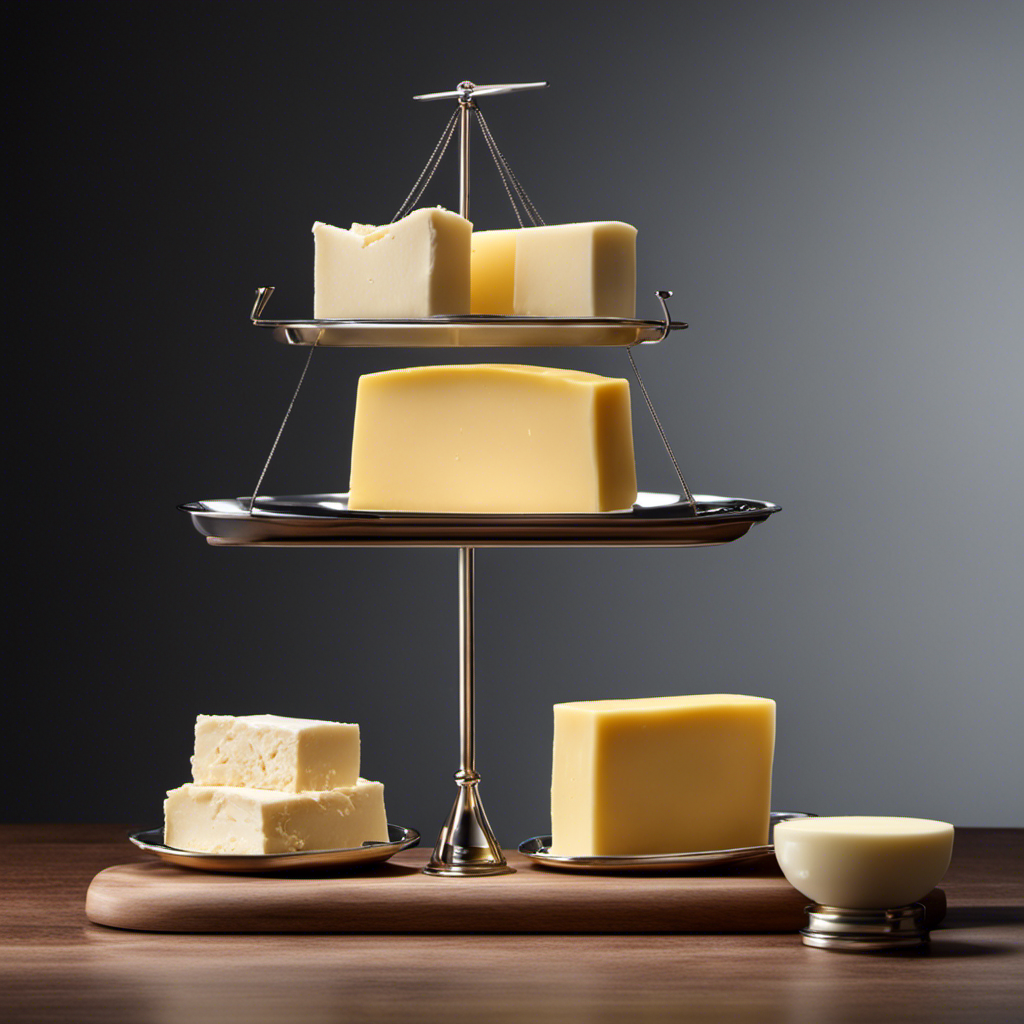
 Recipes & Culinary Uses2 months ago
Recipes & Culinary Uses2 months agoHow Many Sticks of Butter Equals a Pound: A Handy Guide
-
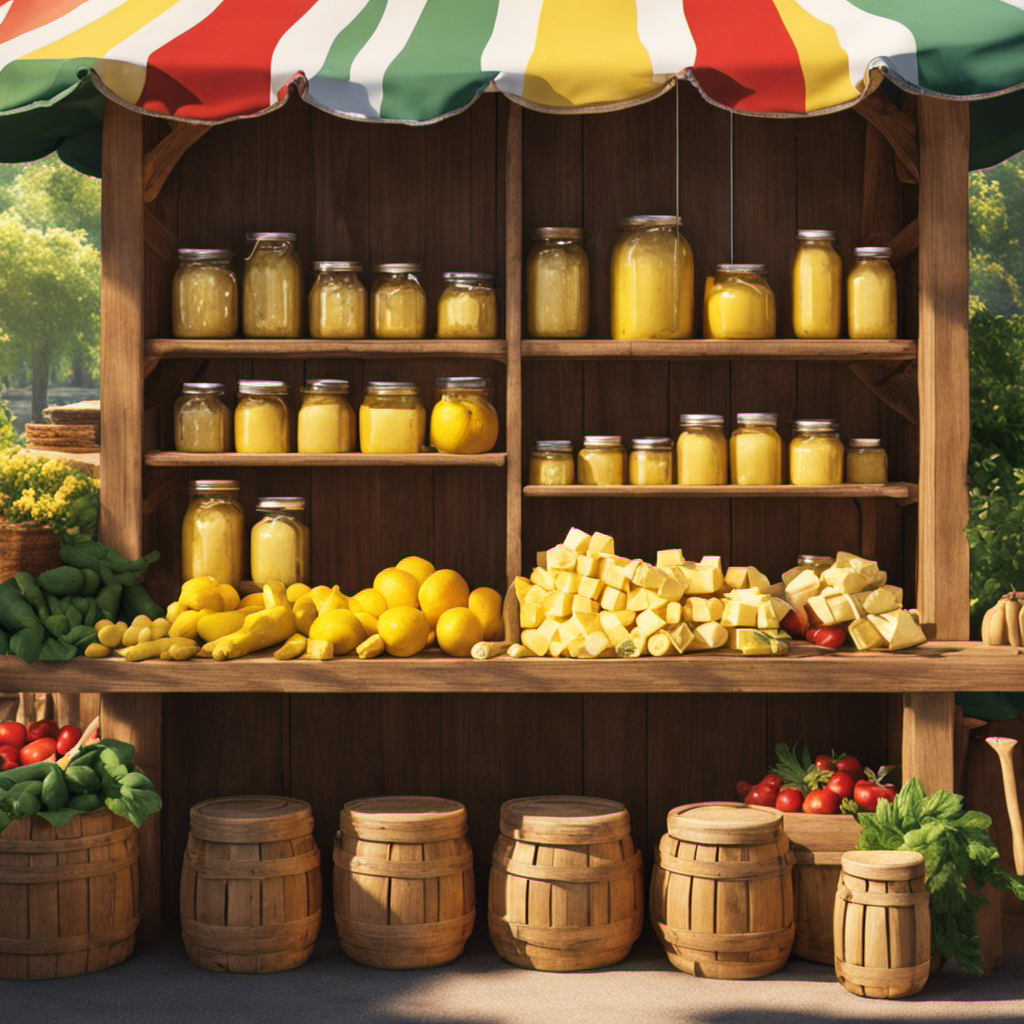
 Shopping Guides1 month ago
Shopping Guides1 month agoWhere to Buy Raw Butter
-

 Recipes & Culinary Uses4 weeks ago
Recipes & Culinary Uses4 weeks agoMake Homemade Butter from Milk at Home
-
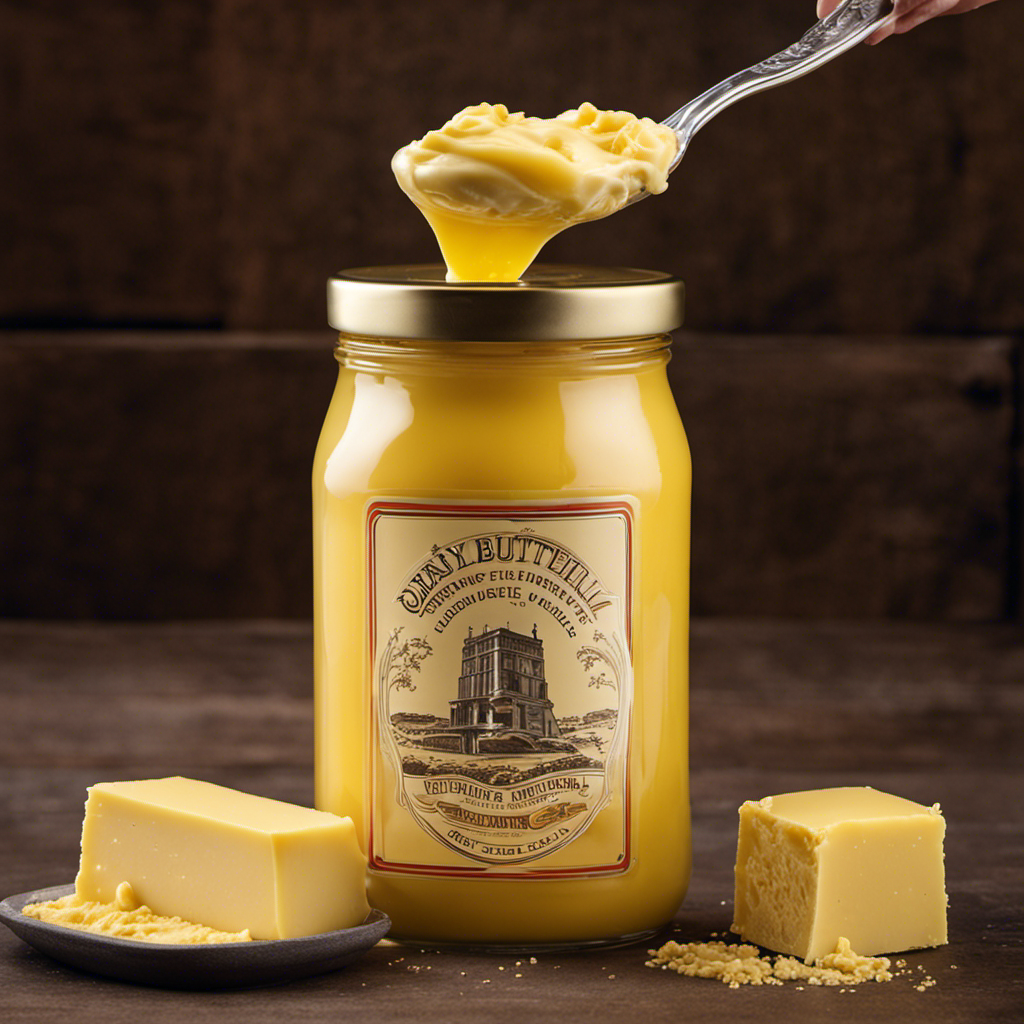
 Recipes & Culinary Uses4 weeks ago
Recipes & Culinary Uses4 weeks agoMake Creamy Butter From Buttermilk
-
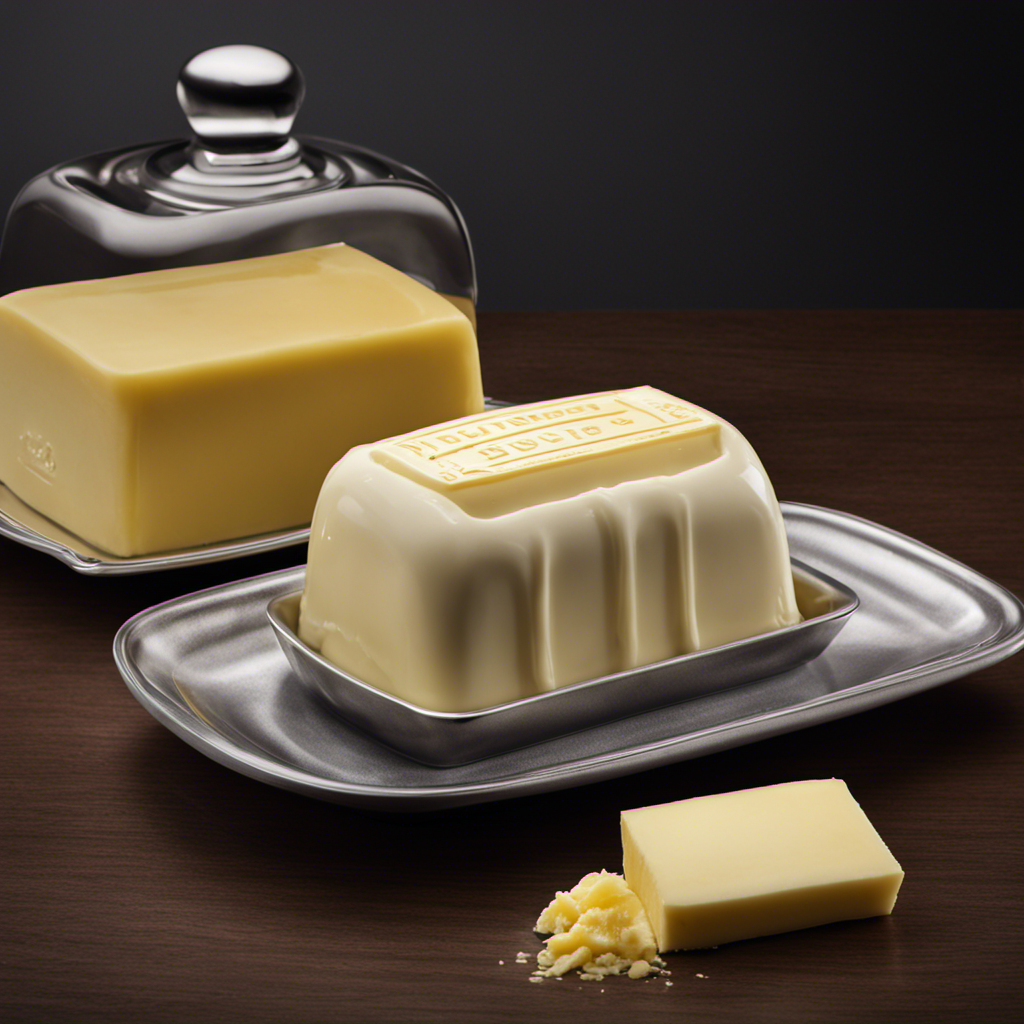
 Butter Tips and Tricks3 months ago
Butter Tips and Tricks3 months agoHow Long Can You Use Butter After the Expiration Date?
-

 Recipes & Culinary Uses2 months ago
Recipes & Culinary Uses2 months agoMake Your Own Homemade Spray Butter
-
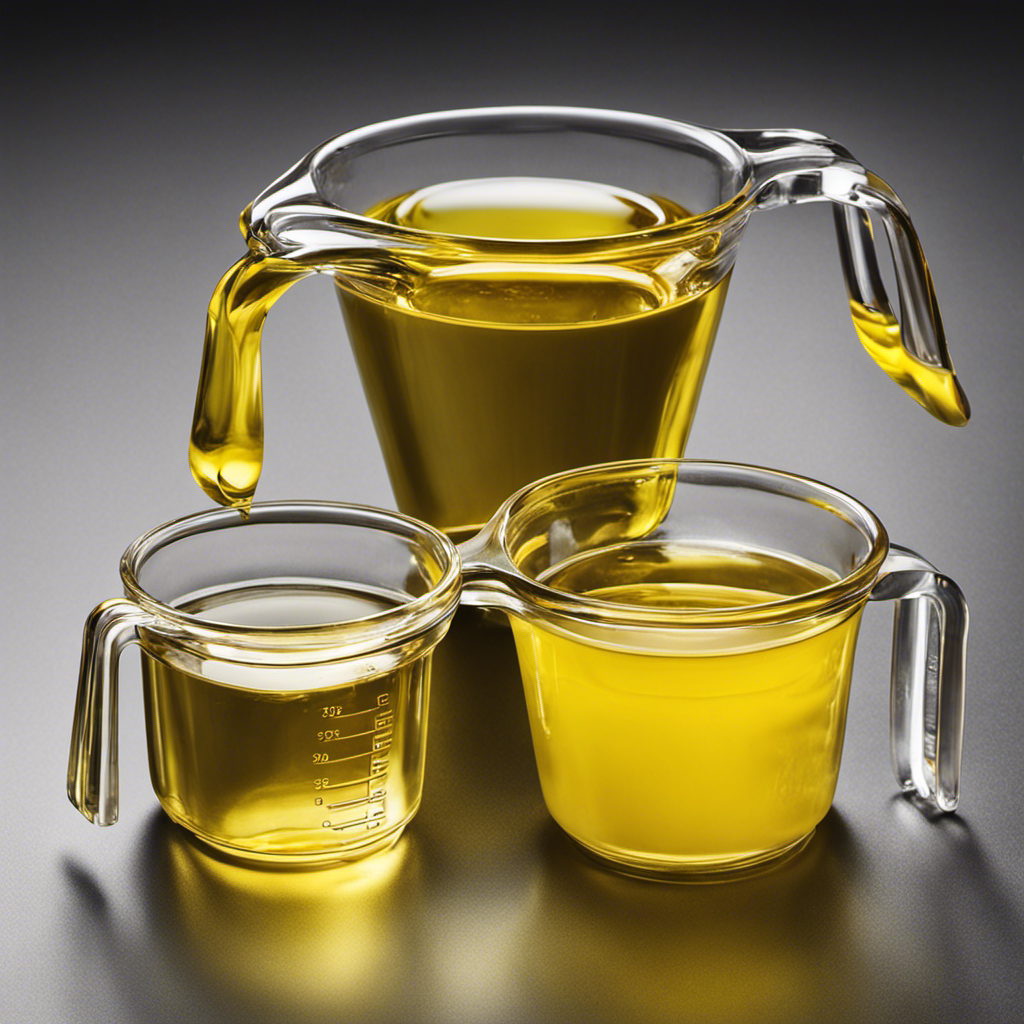
 Butter Tips and Tricks3 months ago
Butter Tips and Tricks3 months agoHow Much Butter to Use Instead of 1/3 Cup Oil
-
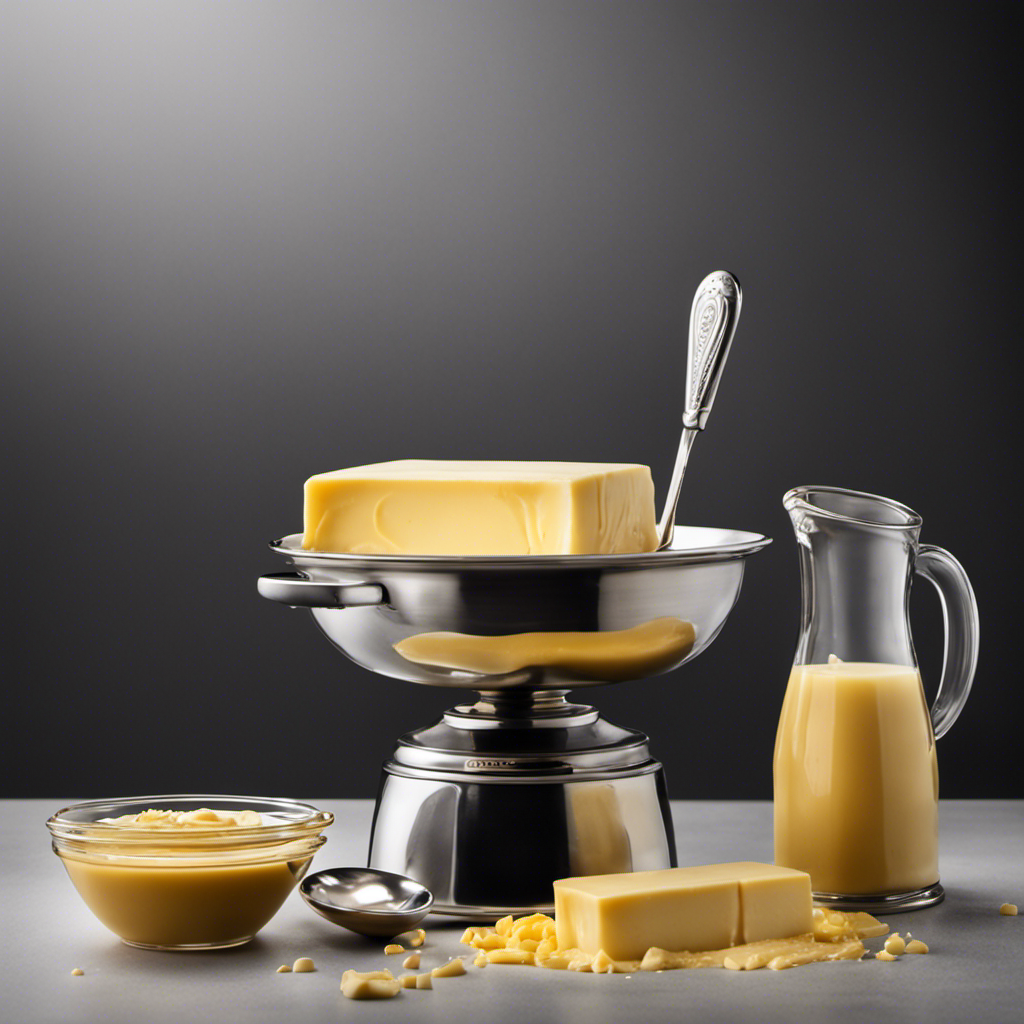
 Butter Tips and Tricks3 months ago
Butter Tips and Tricks3 months agoHow Many Calories Are in a Stick of Butter: A Comprehensive Guide










